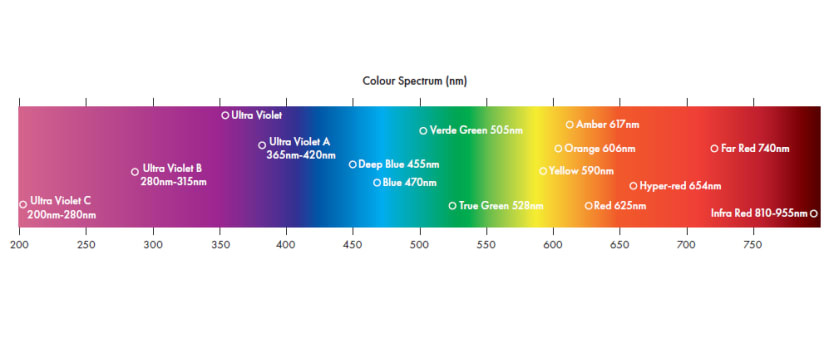Interesting facts about ultraviolet (UV) light
Follow articleHow do you feel about this article? Help us to provide better content for you.
Thank you! Your feedback has been received.
There was a problem submitting your feedback, please try again later.
What do you think of this article?
The following are some interesting facts about ultraviolet (UV) light:
- One of the largest sources of ultraviolet (UV) light in our atmosphere is the sun which emits a full spectrum of wavelengths, including that of UV radiation. The UV spectrum is categorised into three sub-groups: UV-A, UV-B, and UV-C. UV-C radiation is the strongest and most harmful form of UV light, most of these rays emitted by the sun are absorbed by the atmosphere and do not make it to the ground. UV-B rays are still harmful but are less concentrated than UV-C. About 95% of these rays are also absorbed by the atmosphere’s ozone layer. The weakest form of UV light is UV-A.
- UV light consists of short wavelengths that sit at the far end of the light spectrum past the range visible to us humans. These wavelengths are however detectable to some insects such as bumblebees. UV rays reflects off of flower petals which bees clearly detect and then used to guide themselves to sources of pollen.
- UV light was discovered in 1801 by Johann Ritter, who conducted an experiment to analyse the existence of energy past the blue end of the visible spectrum. With the knowledge that photographic paper would turn black quicker in blue light than in red light, he exposed the paper to light beyond the blue end of the visible spectrum. The paper turned black, thus proving the existence of UV light.
- Although UV light, particularly UV-B rays are harmful to human skin, causing sunburn and even leading to skin cancer, UV light can also be utilised in medical applications to treat some skin conditions. For example, vitiligo, eczema, and psoriasis. This is known as light therapy or phototherapy.
- Another useful application for UV light is disinfection and sterilisation. UV-C wavelengths (particularly 222nm) can be applied to surfaces and objects to kill bacteria, viruses, and harmful spores. Doing so will critically destroy bacteria cells meaning they can no longer replicate or survive.
- Ultraviolet lights are often called ‘blacklights’. This name is colloquial and was termed so as the light is invisible to the human eye. A light only emitting UV would leave a room in apparent darkness or ‘black’.
- V-B rays can actually induce the production of vitamin D in the skin. But UV-B rays still have many adverse effects, over-exposure can increase risks of DNA mutation and other cellular damage in living organisms. Even over-exposure of UV-A rays can have negative consequences, all UV wavelengths can damage collagen fibres and thus accelerate ageing of the skin.
- As we know UV is useful for sterilisation. It can also be useful for pasteurisation in food production. Milk and some fruit juices are pasteurized to kill any harmful bacteria. This is done by running UV rays over them, leaving the taste unaffected, but the product is safer to drink and able to last longer.
- Some animals such as scorpions actually appear to glow under UV light, due to the presence of fluorescent chemical beta-carboline in their exoskeleton. Beta carboline fluoresces when exposed to UV light, causing the scorpion to glow an eerie greenish blue.




Comments